| By Roberta Giubilini & Puneeta Sharma, The Royal Archives |
The Royal Archives was founded in 1914 and is a private archive which offers public access to historical papers for educational purposes and academic study, while protecting the personal private papers of The Queen and members of The Royal Family. Access to the Archives is the responsibility of the Keeper of The Queen’s Archives and this authority is exercised on a day-to-day basis by the Librarian as the Assistant Keeper of The Queen’s Archives. The archival collection reflects the changing world and the monarchy’s relationship to it, and contains, among its significant collection, the papers of the last Stuarts in exile, George III, George IV, and those of later monarchs and members of the Royal Family, including the correspondence and journals of Queen Victoria.
The Royal Archives at Windsor Castle, Berkshire, is home to an extensive collection of documents related to the Royal Family and the British Monarchy spanning over 250 years. There are two collections, which are the focal point of a current project: namely the papers of William Augustus, Duke of Cumberland, and the papers of the exiled Stuarts. The project consists of the surveying, conservation and digitization of these papers, which the Royal Archives are carrying out in collaboration with Gale, a Cengage Company who have employed UK Archiving to undertake the scanning.

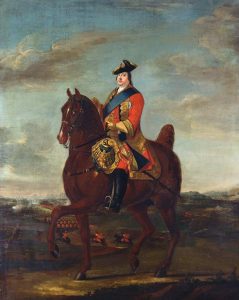
Since the start of the project, a conservation survey of the collection has been carried out in order to verify the condition of each document. Essential preparatory works are carried out if a document is identified as having obscured text or suffering from any form of damage, which causes a loss of information prior to image capture. A large portion of the affected material is mounted, guarded and bound into volumes, and as a result some of the documents contain areas where the text has been obscured by the mount.
In order to rectify the issue of obscured text, a decision was made by the project partners to manually complete the missing text in pencil on the mount where at all possible. In order to assist with this, a light sheet is currently being used which allows the Archives Project Assistant to read the text through the mount. This had the added benefit of limiting the number of documents removed from the volumes. An additional issue is that a number of the documents are in French, Spanish, Italian and Latin.
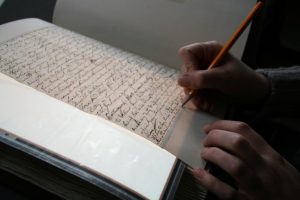
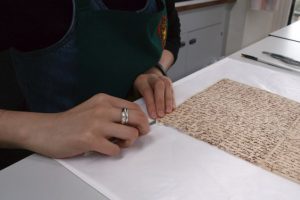
The conservation aspect of this project ensures the completeness of the text of each document to be captured. In addition, it also minimises any potential damage that can occur as a result of handling during image capture. The items constitute handmade paper, and various inks including carbon ink, iron gall ink and printing ink. Occasionally, parchment and newsprint documents can be found within the collection as well. There are also some more unusual items, such as leather and cloth samples, possibly collected for military uniform designs, which are mounted and bound in the volumes.
The most common types of damage to the documents are areas of weakness or loss, where iron gall ink has caused corrosion to the paper structure. These areas are stabilised using remoistenable repair tissue, which has been coated with isinglass. Other conservation interventions are the humidification of distorted areas of a page and the removal of letters from their guards to allow any obscured text to be seen clearly. Post scanning conservation will include the re-integration of removed items back into the relevant volumes.
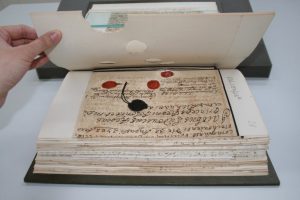
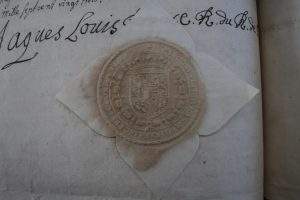
In addition, there are two further aspects to this project. Firstly, the typing and formatting of an early twentieth-century handwritten manuscript of a section of the Calendar of the Stuart Papers, which forms part of the correspondence of Prince James Francis Edward Stuart (The Old Pretender). Secondly, the identification and creation of an inventory of a collection of wax seals, which were previously removed from some of the letters in the Stuart Papers. This will also require them to be re-housed in more suitable storage.
Once the project has been completed, the documents will be available for trial and purchase to institutions ranging from public libraries and academic institutions to museums and galleries as part of the State Papers Online programme published by Gale. They will also be made available onsite to visitors at The National Archives, Kew.
The project to digitize the Stuart and Cumberland Papers in the Royal Archives is led by Laura Hobbs, Archivist (Digital) with Megan Gent, Senior Archives Conservator. The preparatory work is carried out by Roberta Giubilini (Project Assistant: Archives) and Puneeta Sharma (Project Assistant: Conservation).
At Gale, the project is led by Louise Down, Senior Project Manager, with Elinor Hawkes, Digital Product Editor, and Julia de Mowbray, Publisher. For more information about the project, please contact us
First published by the Archives and Records Association in ARC Magazine www.archives.org.uk.Best Halloween Candy , Healthiest Halloween Treats

